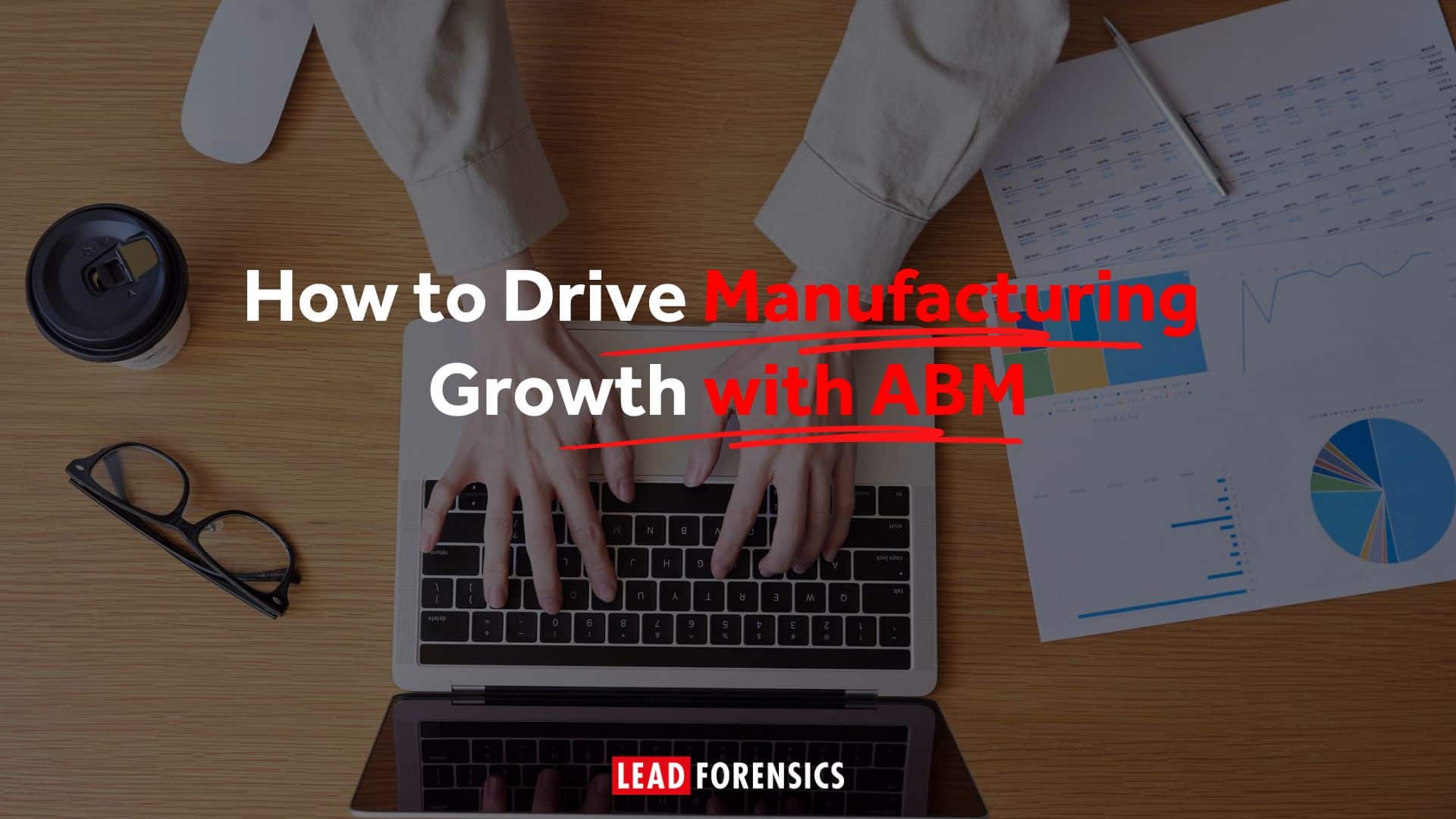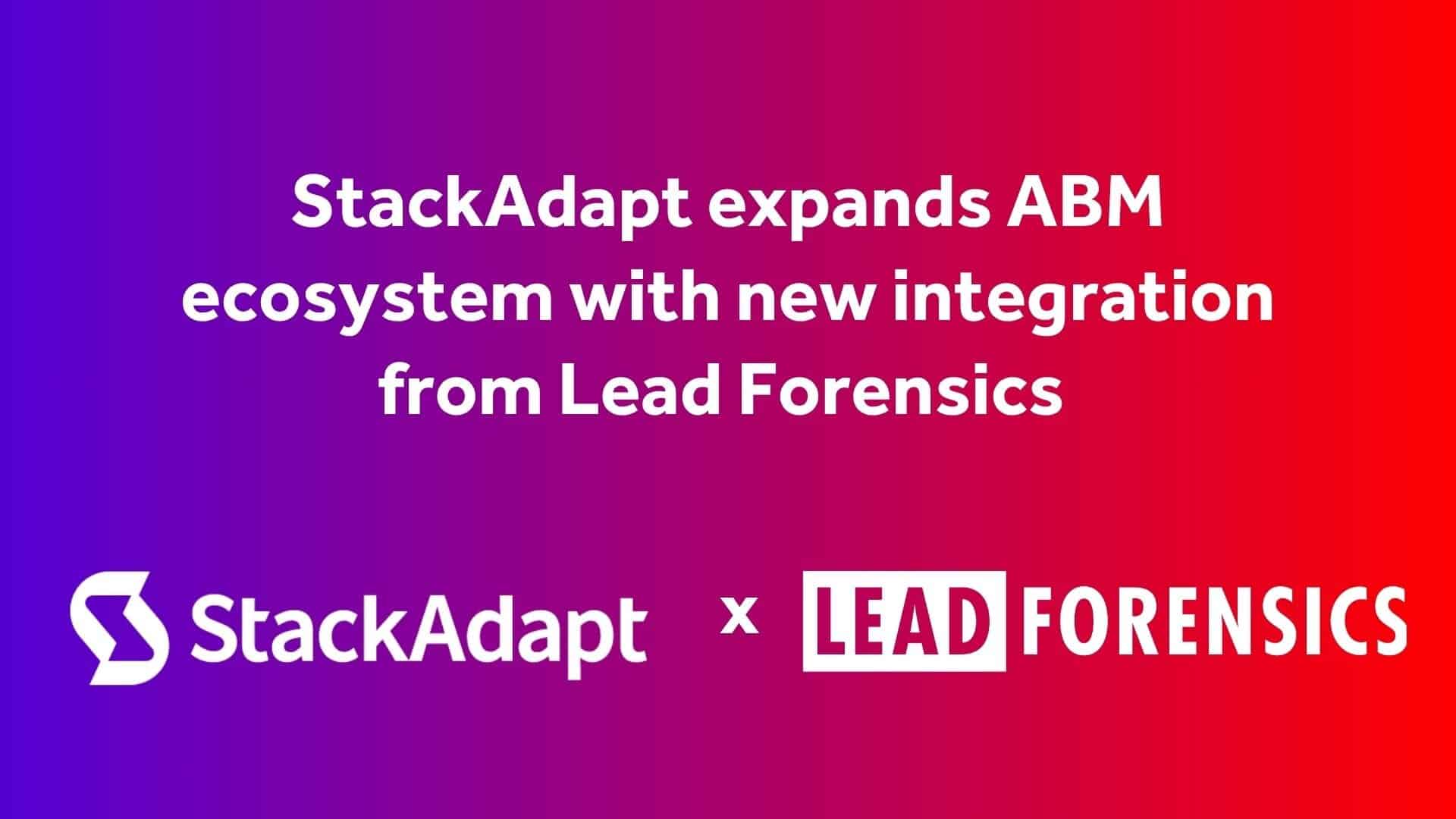Account-Based Marketing (ABM) has emerged as a powerful strategy for B2B manufacturers looking to grow in 2026 and beyond.
This topic was discussed in a webinar, which you can replay on our website. During the session, Barry Richards, VP Global Strategy at ABM agency Transmission, shared his insights into how manufacturers can leverage this valuable marketing strategy.
As Barry explained, ABM isn’t about scattershot campaigns. It concentrates manufacturing marketing and sales efforts on the companies that matter most.
The essence of ABM is to bring B2B sales and marketing teams together in the messaging, so that account outreach is truly unified. This alignment prevents mixed messages and creates a seamless experience for target customers.
For manufacturers, embracing ABM means treating each important account with a coordinated, one-team effort.
Tackling Manufacturing’s Complexity
Manufacturing sales are notoriously complex. Buying decisions often involve a large, multi-level team, from the CEO and procurement officers down to engineers on the factory floor.
As Barry highlighted, a single purchase “can impact a number of different decision makers at all levels… some of them you might be able to reach digitally, some may not… you might have the CEO… but you might have [people] at the coalface”.
This complexity makes it hard for any one salesperson to cover all bases.
But that’s where ABM comes in; it shares coordinated outreach across multiple roles. By mapping out the whole decision-making unit, marketers can design campaigns for each persona.
Creating Content that Resonates
With ABM, content strategy shifts from pushing product specs to addressing real customer challenges. The webinar highlighted how traditional manufacturing marketing often leads with features and data sheets, and other material-heavy content that only resonates with a narrow audience.
In contrast, ABM demands a more human and consultative tone.
You should start with the prospect’s problem. Barry advised: “‘Your challenge is to say… this is a problem for you,’ and then link that to your product and your benefits”.
In practice, that means identifying each decision-maker’s pain points and speaking directly to them. For example, an engineer might hear about efficiency improvements, while a CFO might hear cost-saving angles.
Focus on Outcome-Based Messaging
ABM also encourages outcome-based messaging. Rather than talking about every product, marketing teams craft themes around high-level outcomes that matter to the account, such as collaboration, innovation, or productivity.
One illustration from the webinar was using collaboration as a theme: this umbrella can tie together various products and services. Under collaboration, a company could pitch networking hardware, software, and consulting all at once, showing how they work together.
When you focus on outcomes, you’re given a “license… to rearrange all sorts of product solutions under an umbrella” so that you aren’t locked into one narrow pitch.
Highlight Partnership and Support
It’s also good to understand that with ABM, the tone shifts from transactional selling to partnership. Instead of always asking “Are you ready to buy this product or service?”, good ABM content positions your company as a trusted advisor.
It’s about moving from a transactional relationship to a strategic partnership where you ask, “Where are we going together? What’s your innovation roadmap like?”.
By talking about joint success metrics like product quality, global consistency, or mutual innovation, you build credibility.
Measuring Success by Engagement, Not Just Sales
A key takeaway from the webinar is that ABM changes how success is measured.
With so few target accounts, immediate sales are not a fair yardstick. Instead, success is about building engagement and trust over time.
As Barry said, that means your ABM program “has to be measured by… how you’re able to engage with those organizations”, rather than expecting a quick win.
Early wins might simply be an invitation to a meeting or a small pilot project. These engagements lay the groundwork for much larger deals down the road.
The ultimate goal is for target customers to see you as a trusted adviser who truly understands their challenges. And ABM content should get buyers to switch on to your organization as someone who understands those challenges.
In practice, that means tracking metrics like:
- How many decision-makers have viewed our custom content?
- How many have returned to our site?
- Which accounts have moved from initial awareness to active discussions?
With ABM, even small steps like a response to an email or a click on a personalized landing page can be a signal of progress.
Marketing and sales teams should share a single dashboard of engagement, so everyone knows which accounts are warming up. By focusing on nurture metrics rather than just deals closed, companies can sustain ABM programs through the lengthy manufacturing sales cycle.
Piloting and Scaling ABM
Many organizations start ABM with big dreams of one-to-one campaigns that hang off extremely tailored outreach for a handful of accounts. But during the webinar, Barry cautioned that pure one-to-one is often unsustainable.
“You can’t just keep doing one to one programs,” he said. “They are too intensive for most people by the very nature of what they’re asking”.
Instead, a hybrid approach works best.
The recommended strategy is to run a highly personalized pilot on a small number of accounts, while simultaneously launching a one-to-few program for a larger group.
For example, you might give 3-5 key accounts the full bespoke treatment with custom content, personal events, etc. and at the same time send slightly more generic, persona-based content to the next 20-50 accounts.
This combined tactic protects you: if the one-to-one deal falters, you still have momentum from the broader campaign. And remember, early wins are critical. As the webinar warned, if a pilot “is deemed to have failed,” the company might scrap ABM altogether. Phasing your approach with quick, measurable successes keeps stakeholders on board and budgets secure.
“It’s almost like… identify one account [for one-to-one] and then create an at-scale approach to run alongside to get some quick wins and some initial traction,” Barry explained.
When you’re ready to scale, look for common themes across accounts so you can re-use 70–80% of your assets and customize only key parts. You’ll need to invest in technology like marketing automation and ABM platforms to personalize at scale.
Aligning Teams and Leadership
ABM is as much about organizational alignment as it is about tactics. It requires executive buy-in and champions across both marketing and sales.
It’s essential to get the right team in place across marketing, sales, leadership and appoint a program champion. Everyone from the CEO to sales reps should understand the strategy and support it. For example, having a sales leader co-present an account plan with marketing at a leadership meeting shows unity and commitment.
The webinar points out that with strong leadership support, it’s easier to say no to requests that would derail ABM, and to allocate the right resources long-term.
Cross-functional communication is also vital. Regular joint meetings between sales and marketing ensure messaging stays consistent. Some companies even create shared dashboards so both teams see the same engagement data. Others use shared account landing pages. These single pages, personalized for an account, can be given to sales reps as a talking point when they meet customers, keeping everyone on the same page.
Finally, remember to align on metrics. Sales should understand that these ABM activities might not pay off immediately in closed deals. Instead, the joint goal is engagement depth.
If leadership sees marketing and sales demonstrating success or failure together, ABM becomes a team sport rather than a point of friction.
Leveraging Data and Insights
Before launching any kind of manufacturing ABM campaign, make sure you use all available data to build a 360° view of your target accounts.
The webinar highlights techniques like analyzing third-party intent data and web analytics to help you understand which businesses are that 5% that are in market right now.
For example, if you see a target company repeatedly visiting your site’s product pages, that’s a strong signal to accelerate outreach. Many manufacturing marketers create propensity to buy models using past purchase history and online behavior to predict which accounts might be ready to engage.
For the other 95% of contacts who are not yet sales-ready, data still helps shape nurture campaigns. Companies can segment accounts into buckets and tailor strategies accordingly.
Accounts that are likely out of market get top-of-funnel content, like broad thought leadership pieces, to keep your brand in mind. This might include white papers on industry trends or invitations to webinars on challenges in manufacturing. Meanwhile, in-market accounts get more direct offers or sales outreach.
Marketing teams also need to research target organizations to build out the data and insight you need to agree which stakeholders you need to reach.
For instance, if an ABM program is underway at one business unit, sales may want to expand to other divisions. Marketing can help by mapping out the parent company’s structure and finding new stakeholders.
The right tech stack can make this easier. Barry recommends using:
- Web visitor identification tools like Lead Forensics
- CRM data
- Research tools that will help you uncover the right contacts.
Ready to Try ABM?
It’s much easier to create an impactful ABM campaign if you can see which businesses are already interested in your manufacturing products or services.
Lead Forensics reveals your anonymous B2B website visitors to help you identify which of your target accounts are browsing specific pages. Many manufacturing companies use Lead Forensics to watch for those 5% of potential buyers showing intent that can then be nurtured with an ABM campaign.
In a sector where the sales cycles are long and complex, having this kind of visibility makes it easier to nurture relationships until they mature into real opportunities – and close the deal before they go to your competitor.
Book a demo to see how Lead Forensics can help grow your manufacturing business.









